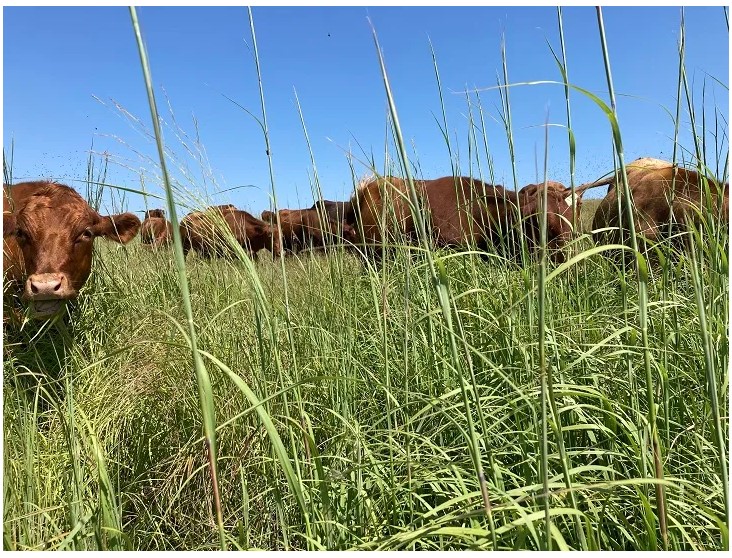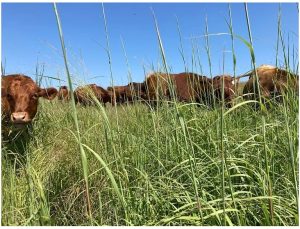
STURGIS, S.D. – Drought conditions across northern South Dakota have seen some relief due to the precipitation received in the past few months. Despite some decent rainfall occurring, most of the state is still behind normal for the water year (Figure 1). The water year begins in October because of how impactful dormant precipitation is for soil moisture and plant growth.
The 4-week Evaporative Demand Drought Index (abbreviated as EDDI) ending July 1, 2025 is notable, because it shows the positive impact that all the recent rains have had (Figure 2). This map is strongly influenced by both precipitation and temperature and indicates the potential for drought conditions to emerge/worsen. In a nutshell, the EDDI is based on how ‘thirsty’ the land is and serves as a good early warning system. As the growing/grazing season continues and comes to an end, this is important to keep in mind to allow pasture recovery before the dormant season.
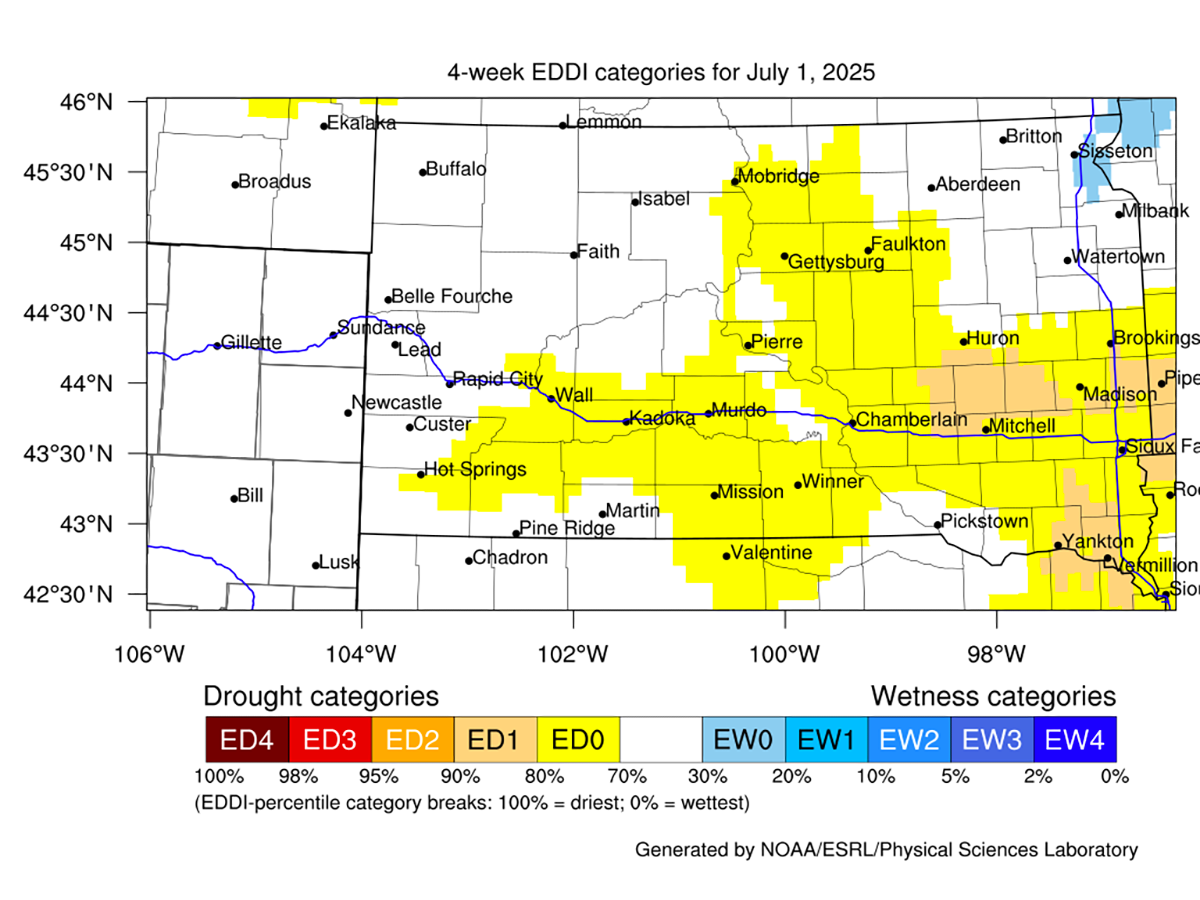
Understanding Forage Production and Recovery
South Dakota is predominantly a cool season plant community, which means the majority of forage production usually occurs prior to July 1st (Smart et al., 2021). The SD Drought Tool indicates the percent of normal forage production as of July 1, 2025 (Figure 3). Despite some good moisture experienced in recent months, scattered areas across the state are still showing less than normal forage production. This is no surprise, especially when looking back to spring, we started off so far behind the curve on precipitation and soil moisture.
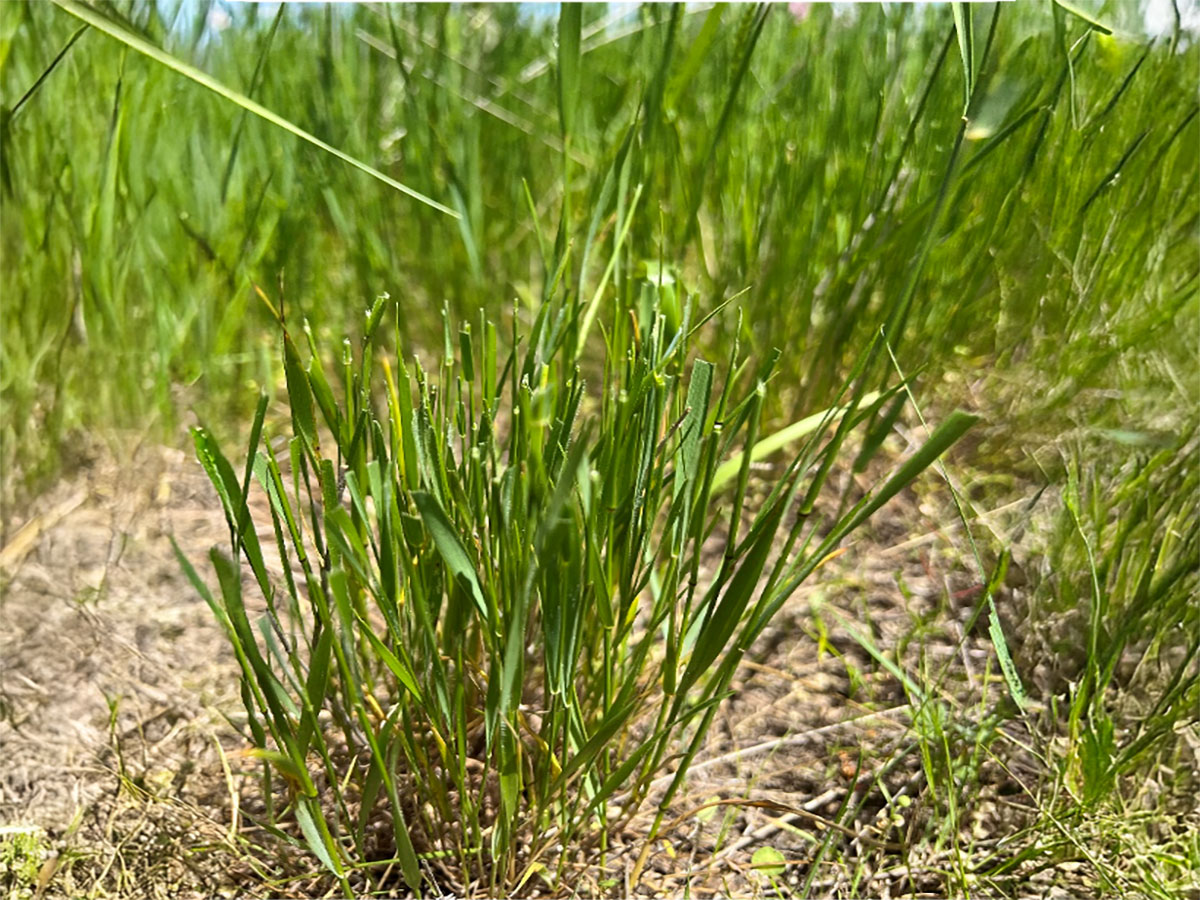
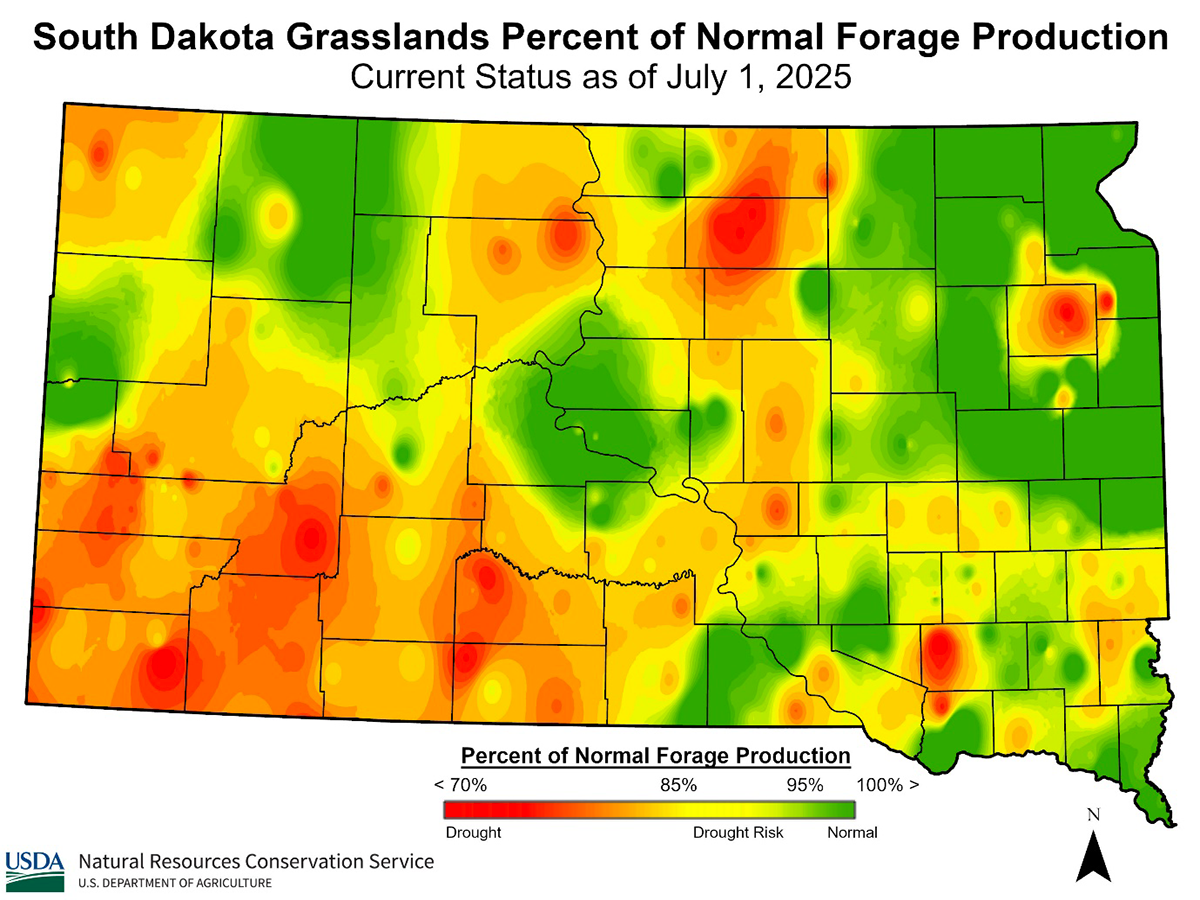
One thing that is important to remember throughout the end of this growing and grazing season is that rest and recovery do not mean the same thing! Rest is simply a function of time, while recovery is the outcome of growing conditions. Regardless of how long a pasture is rested, it should not be re-grazed until those plants have fully recovered from their defoliation. This recovery depends on the moisture and temperature that occur during that time.
It is important to have some pasture recovery going into the dormant season. Or to leave enough standing forage and soil surface armor behind to protect the soil. This plant material is beneficial in acting like a sponge to absorb and store dormant season moisture. The moisture we receive, especially in the fall before the ground freezes is essential for re-charging soil moisture (which is essential for the spring green-up). Looking back to last winter, we did not receive much (if any) precipitation for recharging soil moisture and that set us back this spring.
What Are Current Climate Outlooks Predicting?
Looking ahead to the fall, the outlooks are currently showing below average seasonal precipitation (Figure 4) and above average seasonal temperatures (Figure 5). Despite the spring moisture received in 2025 so far, the outlooks suggest that fall could generally be hotter and dustier than we’d like to see. Fall is an important time for soil moisture to recharge, so this will be important to keep an eye on.
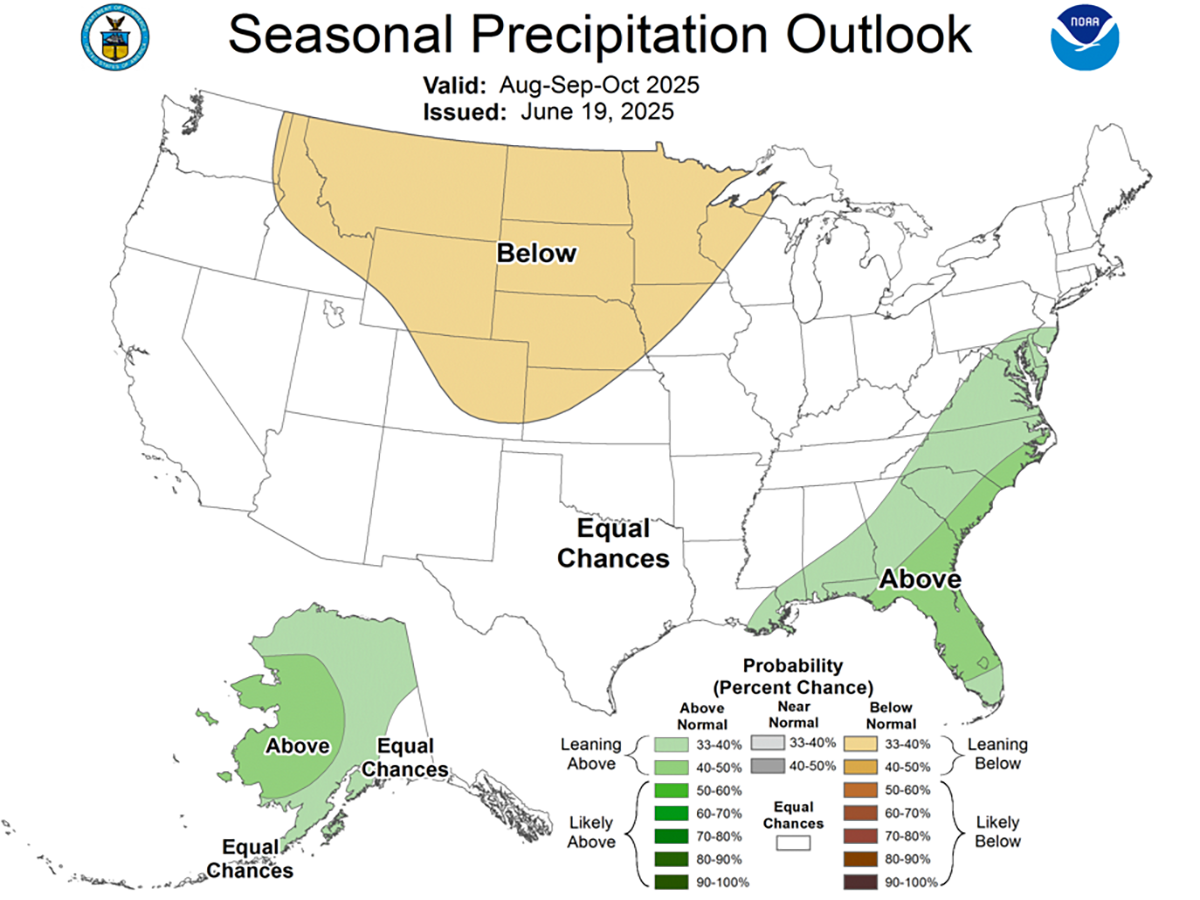
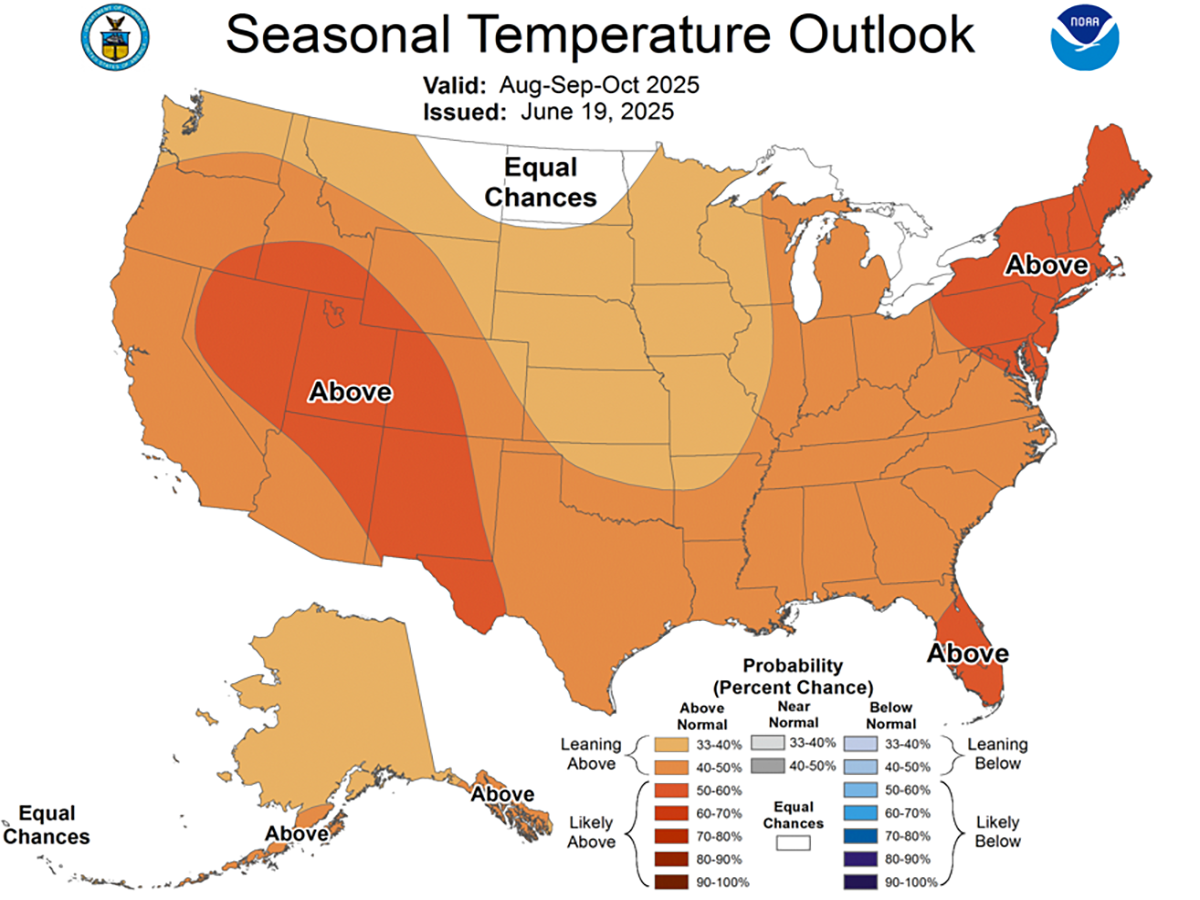
What Are Your Plans for Fall?
July is a good trigger date to investigate the following questions:
Moisture/Climate
- How much precipitation was received:
- Since October 1, 2024?
- Since January 1, 2025?
- Since April 1, 2025?
- What are current weather outlooks predicting in the coming days, weeks, and months? (Will there be an opportunity for pasture recovery to occur?)
- What are current drought conditions in your location?
- How much soil moisture exists now?
Forage
- What is the current condition of your pastures? (How much have they recovered since the last grazing event? How much standing forage exists? How much soil cover? Etc.)
- What has been your forage production this growing season (below, average, or above normal)?
- What are your current feed resources? (Harvested forage/hay? Cubes? Grazing opportunities?)
- What are the feed markets indicating? Can you take advantage of feed prices and lay in an extra feed supply now?
- Are there alternative feed resources, such as grazing corn residue or cover crops, that you could take advantage of this fall?
- Are there alternative grazing strategies you could try (rotational grazing, targeted species grazing, etc.) to keep your nutritional level higher?
Livestock
- If you spring calve – what is your weaning strategy? (Do you plan to wean early to take advantage of forage savings?)
- Are you prepared to feed livestock stored forages if fall grazing is reduced?
- What are your cow body conditions? (Are they thin or fleshy? Are they gaining weight or losing?)
- What is your culling / de-stocking strategy? (Which animals will be the first to go?)
- What are cattle markets indicating? (Can you take advantage of prices by strategically culling or de-stocking?)
Considerations for Fall
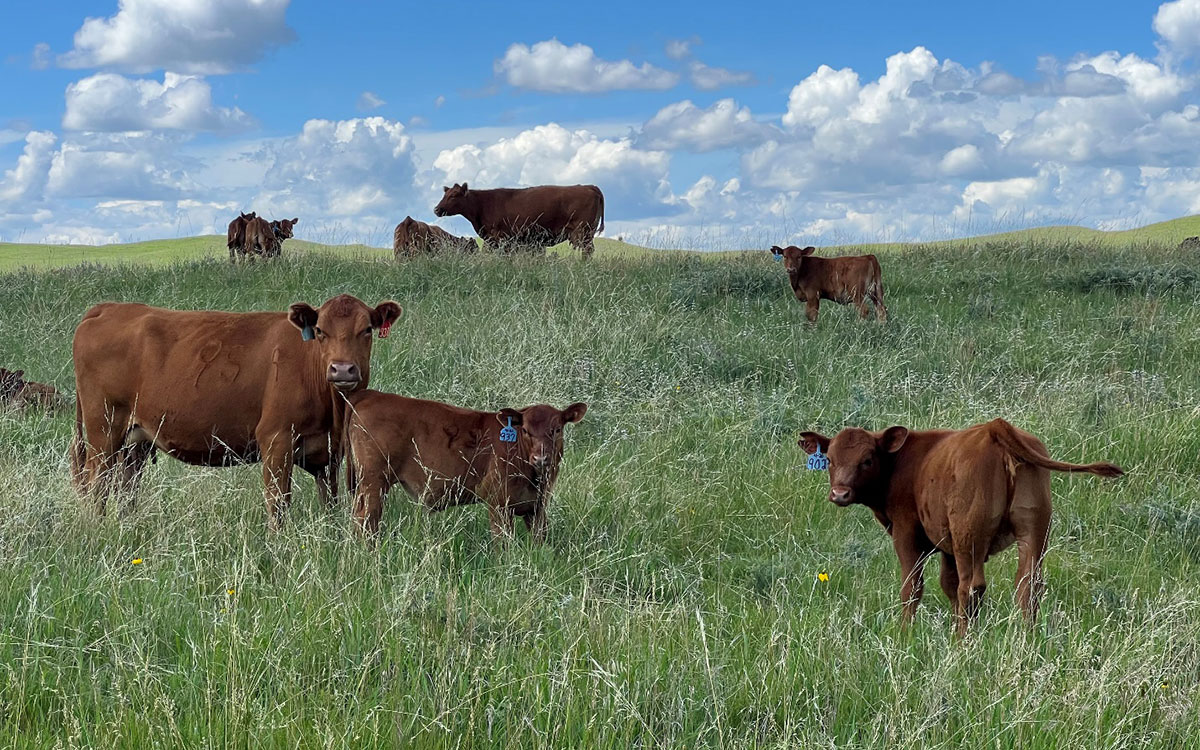
Although the summer heat makes it difficult to think about the cooler days of fall, it is a good time to think and plan ahead. Looking ahead, it is a good idea to allow some pasture recovery to occur if you can pull cattle off pastures early. Something to consider is where do you have adaptability built into your business? The greatest sum in most cattle budgets is simply keeping those cows fed. Adaptive strategies can include weaning early, maintaining herd flexibility, exploring alternative feed/grazing, and simply planning ahead with forage and weather prediction tools.
If you are short on grass, weaning early is one of the simplest strategies to immediately reduce grazing pressure and forage requirements. This is because the nutrient demands of lactation are removed which reduces the amount of forage required and benefits cow performance. Fall is a great time to consider alternative grazing strategies on cropland. Once the cash crop is out of the ground, livestock owners can often have access to high nutrient quality cover crops or low-cost crop residue to graze. Whatever decision you are making, stay informed and consider the strategies that give you multiple options!
Helpful Resources
- Combatting Drought Conditions With Early Weaning
- Increasing Adaptability With Alternative Grazing Strategies
- See the National Drought Mitigation Center (Ranch Planning) and Managing Drought Risk on the Ranch for a decision-making guide and example drought plans.
- For more information on climate and weather outlooks, contact SDSU State Climatologist, Laura Edwards or visit the SD Mesonet website.
- For more information on pasture monitoring and drought planning, contact SDSU Extension Range and Natural Resources staff.


